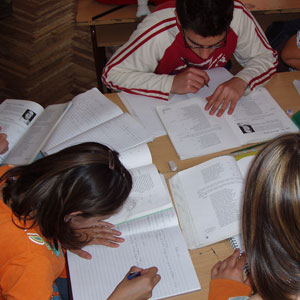As the number of Filipinos falling sick because of A (H1N1) grow bigger, mitigation has become the overriding strategy to keep citizens safe from the threat of the pandemic. Most of those who become sick are students, given the close quarters in which students move and the fact that they spend most of their days in schools.
The A (H1N1) strain that hit the Philippines has proven mild, with a high percentage of patients eventually recovering. But the cost on other fronts—productivity reduced, business incomes lost, and lessons skipped in school would be harder to recover. The pandemic is therefore a legitimate health security issue, for which the sector is thankfully prepared.
At the 6th monthly General Meeting of the American Societies for Industrial Security—Philippine chapter (ASIS), security professionals exchanged ideas on what mitigation measures are being put in place in schools and establishments to protect against the further increase of A (H1N1) cases.
“What is driving this paranoia is the novelty of the disease,” said Armeen Gomez, CPP, who is head of security of the De la Salle group of campuses, which reported the first case of A (H1N1) in the country. “But basic measures are all that’s needed to protect our students from the virus,” added Gomez.
Carlos Bautista, CPP, who heads the Security for the AMA Group of Companies said that the challenge in responding to the threat lies in balancing one’s call of duty to report cases while at the same time protecting your name.
As any institution’s first line of defense from outside threats, security professionals carry the burden of monitoring and ensuring that their institutions remain A (H1N1) free.
In certain schools and universities, the first option of choice had been to close down, but with new regulations promulgated by the Department of Health (DOH) and the Department of Education (DepEd), closure is not required until a community-level transmission is confirmed. Thus, mitigation becomes the priority.
Mitigating measures put in place include making sure students coming to school do not display symptoms of flu-like illness.
As Bautista adds, the precautions are in place. Such precautions in turn have resulted in lesser infections than previously feared. He said that when they see that a student may have flu or high fever, “they are sent to the infirmary right away.”
Should students be found to test positive of A (H1N1), the security providers working with schools declare that they are more than well-prepared to undertake contact-tracing and reporting of cases to the proper authorities.
To put things in perspective, Ace Esmeralda, CPP, managing director of Ace And Associates, clarified, “There are more people dying from road accidents than from diseases like A (H1N1) or even SARS a few years back.”
He cautions though, “If you look at all schools infected these are schools with the capacity to identify and screen their students, but what about public schools with no security officers, no systems in place on campus security?”
Esmeralda suggested that schools should have even management plans in place. With the DOH and DepEd guidelines, these policies combined can help minimize the effects of A (H1N1) on schools.
The priority, the security professionals agree, is “informing without adding to the panic,” as Esmeralda declared.
Security providers in other industries agree, adding their own experiences and ideas.
“What is needed is thorough and sufficient information dissemination to avoid exaggerated reports, which should be done by DOH,” added Mayette Allaga.
But, on their own, establishments frequented by the public have already taken their own steps to minimize the panic caused by the media reports on A (H1N1). Mike Datuin, CPP, head of security for the Ayala Museum said that there should be more research on the reality of the virus and its rate of infection. “Even then, just to be sure , we have given awareness seminars to our employees,” he added.
Jun de la Cruz, CPP, head of security for Rockwell enumerated the measures in place with the mall. The visible measures are obvious, he said, “such as cleaning the comfort rooms and escalators, etc.” but there are also other measures that are not as visible. For example, he said, sick employees are asked to take a leave as a precaution. The mall also has an inter-departmental body to monitor and prepare for the virus, called the Environmental Safety and Health Committee, which makes decision-making within the establishment more open, dynamic, and well-informed.
Meanwhile, in the largest chain of malls in the country, SM, the policies are very thorough. “We put premium on awareness,” declared Almus Alabe, CPP, who heads SM’s security department. “With four to five million traffic a day, health security is an utmost concern.”
But Alabe maintains that in SM, flu shots were given to employees who volunteered. “Employees were also bombarded with information so that they do not panic as well.”
Alabe described SM’s precautions, saying that they have equipped their security personnel with equipment and paraphernalia. “Guards have their own alcohol, thermometers, gloves, sticks, etc.”
He also added that they put up informative posters around their malls, “and made it visible for customers.” Further, they regularly disinfect points of contact within the malls such as handrails, elevators buttons, etc.
With all these measures in place, students and the public in general have less to worry about the pandemic that is A (H1N1). As an employee of an embassy said, “There is nothing to panic about. Immunity comes from preparedness.”
As Esmeralda summed it up, “Our job as security providers is not to create panic but to create awareness.”
Indeed, the security profession has what it takes to provide the much-needed sobriety in facing the threat of pandemics like A (H1N1). The industry forms part of the awareness and information campaign to ensure the public, especially the students who appear at most risk, to keep safe.
And in doing so, panic is avoided and the mitigation of the disease becomes easier. •






